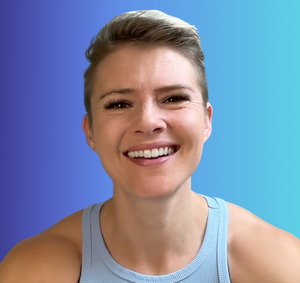During a video call or interview, ideally you are looking at the person you are talking to whilst also looking down the lens of the camera.
Not only do you have a better connection with the person you are speaking to, because you are looking into their eyes, but recordings look better because you’re looking at the audience rather than down, which looks weird.
Laptops don’t allow for this without further kit.
Inspired by this Seth Godin article about looking and feeling better on Zoom calls, I created a version of his setup that can be easily dismantled and transported.
It works if you’re having a remote meeting somewhere different from a permanent office or desk, for example on a table that doubles as a dinner table, or whilst travelling.
Here’s the kit I use:
A Little Prompter. This is a small beam splitter that can either sit over your laptop camera or atop a tripod. The Little Prompter is primarily a teleprompter; enabling scrolling text to appear in front of a camera, so you can read whilst looking down the lens.
Here, it reflects my iPhone’s display over the camera. Teleprompters that use your phone are more compact than those designed to hold iPads or reflect horizontal monitors, so can be easily stored or moved.
Downloading the Duet Display app will let you use your phone as a second screen. Drag the Zoom display from your computer or laptop onto that second screen, set Zoom to speaker mode, and the person speaking displays in front of the camera as if by magic.
I use this ring light with accompanying tripod (which collapses for transportation and storage) with the metal bar that comes with the teleprompter. I fasten the teleprompter to the bar and my Canon M50 Mark II camera behind it, using the screws that come with the teleprompter.
Plug the camera into your computer using the cable it comes with, download the Canon webcam software and select your camera from the options on your Zoom menu to use it as your webcam.
Now, your Zoom buddy will see you staring right back at them in high quality. Whilst you’ll see them pretty small (smaller than in Seth’s blog), because they are displayed on your phone, the eye contact more than makes up for it, and you can always position the tripod closer.
The Canon will run out of battery during lengthy calls or interviews, so you can plug it in using this M50 charging cable (not pictured). If you’re using a MacBook with no USB ports you might need this USB adapter to connect everything up, including the ring light and your microphone. I use the Blue Snowball (not pictured).
You can pick up every piece of kit here for less than £1000/$1400 in total. The upgrade in production quality is well worth it, especially as so much vital communication is done via video call.
-
Update: My friend Rob Geraghty of Presenting Virtually also recommended Plexicam for a different solution to the same problem.









